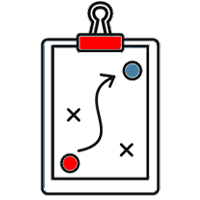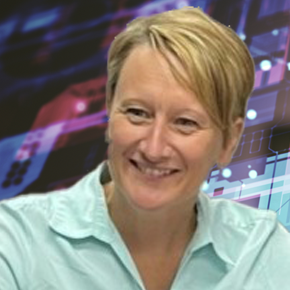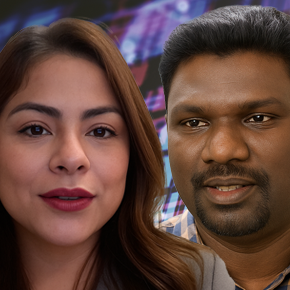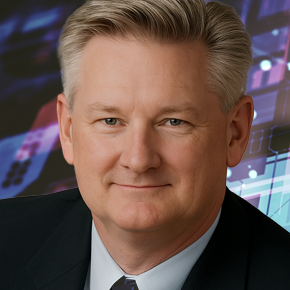January 19, 2023
Cost, Collaboration, and the Path to Zero RFQ

Transcript
Are cost engineers and design engineers doomed to fight forever? When shooting for Zero RFQs, it’s an ongoing challenge to get design engineers and cost engineers on the same page so that you’re not in a constant struggle to take cost out of designs, but rather designing for cost from the first phases of the process.
Nobody knows this better than Jegan Dhanapal, a former design engineer and now cost reduction leader for CNH Industrial. I caught up with Jegan Dhanapal at aPriori’s Manufacturing Insights conference. There we talked about the process gains that he has seen since implementing aPriori, and also the ongoing challenges that cost engineers and design engineers face collaborating together.
I think this conversation will leave you with a true picture of what digital transformation looks like in process: some quick gains, some growing pains, and a lot of opportunity in the future. Here’s my conversation with Jegan Dhanapal.
Leah Archibald: You started as a design engineer and then you moved into cost?
Jegan Dhanapal: Yes. I started my career as a design engineer and then for 12 years I was working as a project leader. Then in 2013, when I moved from my previous organization to CNH, I changed my role from design to cost. Since then I’m in cost, and I started using the aPriori in 2018.
Leah Archibald: So, what did you find with aPriori when you started to implement the cost solution? Was there anything surprising that you found?
Jegan Dhanapal: It is more user friendly, because we are able to leverage the 3D model and then directly import it into aPriori. Then it provides all kinds of information. In terms of design engineering, can see the different splits where the cost breakdowns are happening. For a cost engineer, we are also able to provide the split and see what drivers are contributing to the cost of the design.
Leah Archibald: Tell me about adoption within your organization. Was it challenging to get everyone on the team on the same page with the tool?
Jegan Dhanapal: No, I think I wouldn’t say that. Because currently we are at 1500 license with 890 users.
Leah Archibald: So you have good adoption – that’s what you’re saying.
Jegan Dhanapal: Yes. We started with a little group and our team leader was so pro to aPriori that we started using it at all the engineer levels. We used it for the design – to see is it designed for manufacturable? What’s the cost? Everything is taken care at the front of the design.
Leah Archibald: You basically started with a small as a proof of concept.
Jegan Dhanapal: Yes.
Leah Archibald: Did you see ROI very quickly in that group?
Jegan Dhanapal: Yeah. We did.
Leah Archibald: So that allowed you to scale it up to the rest of the teams. Today you’re talking to users at other companies – tell me about what you’re learning. What’s been most exciting to you?
Jegan Dhanapal: I see most of them are having the same pain. It’s good to see how they are addressing the same problems. That way we can do the benchmarking and see how we can improve as a company. There are other steps for new development with aP Workspace that we are trying to see how we can implement in our organization.
Stop Designers From Driving Up Cost
Leah Archibald: When you say other manufacturers are having the same pain, what is that pain that you’re talking about?
Jegan Dhanapal: Design engineers are not using the cost.
Leah Archibald: What? Why not?
Jegan Dhanapal: Their priorities are different. I’m not blaming engineers. It’s because they are put under so much pressure. They have to come up with a concept which has a certain performance, quality, cost, and weight.
Leah Archibald: And they have to do it quickly, because they have so many things on their plate. They have to bang out so many designs. I suppose the key for you is making it as seamless as possible, and as painless as possible for the design engineers to use the solution.
Jegan Dhanapal: It’s the process. Once we have the optimized design, it should get to the purchasing department in a seamless way. And the next step is – once we have the code from the supplier – it has to pass through the cost team so that we know everything is in line. If the numbers are in line then we are good. But if there is a deviation, then we have to reconcile the difference. So I think the aP Workspace will help us.
Leah Archibald: So getting everyone on the same page within the aP Workspace – optimizing your workflow so that everyone is taking advantage of the same insight – that will help.
Jegan Dhanapal: Yes. Now everything is in the email, so when people lose the email we do not know what has happened. I think it will help us to have the data in aP Workspace because everything related to that particular part will be there. We can go back and look at the history and see what was the design feedback, what was the manufacturing feedback, what was the purchasing feedback and how was it quoted in 2020 or 2018. I think that will be a good tool.
Leah Archibald: I’m glad to know that it’s not only you – it’s everyone feeling the same pain point at the same time. When you go home, what is it that you’re going to take back to your home company and try to change immediately?
Jegan Dhanapal: I think the new thing is Zero RFQ.
Leah Archibald: Say more about zero RFQ, what is that?
What is Zero RFQ?
Jegan Dhanapal: Zero RFQ is partnering with the supplier so you don’t need to request a quote. Now we are picking the supplier who provides the lowest cost. With Zero RFQ, instead you have the right supplier, the strategic supplier, and you work with them in a different way. You look at the overages, the margins and how much they want, and you fix that. You look at the labor rate and the material rate. Fix everything. Change your way of contractual agreement so that instead of a negotiation, you put the financial agreement in terms of these items. They you build their physical factory into your virtual model and then simulate accordingly. Get the confidence of the supplier and go from there.
Leah Archibald: So if you have a complete model of their factory within your digital factory, then you can literally have zero requests for quotes. The quote is just there. You just put it into your model, and boom, it’s there.
Jegan Dhanapal: Yeah, we just prepare that and then send it to the supplier. They may say, “We need to send this part to subcontract.” But it won’t be four weeks, it will be a week or less than a week.
Leah Archibald: That saves a huge amount of time, but it also saves a huge amount of money when you’re dealing with quick decisions. You can tack from one supply chain shortage to another.
Jegan Dhanapal: Yes. And the other thing is we are using the right cost from the tool. We are going to write that as a PO, and then that’s their price. So we always meet the program cost. The predictability of the cost will be certain always.
Leah Archibald: That is extremely exciting. Thank you so much for talking to me.
Jegan Dhanapal: Thank you.








